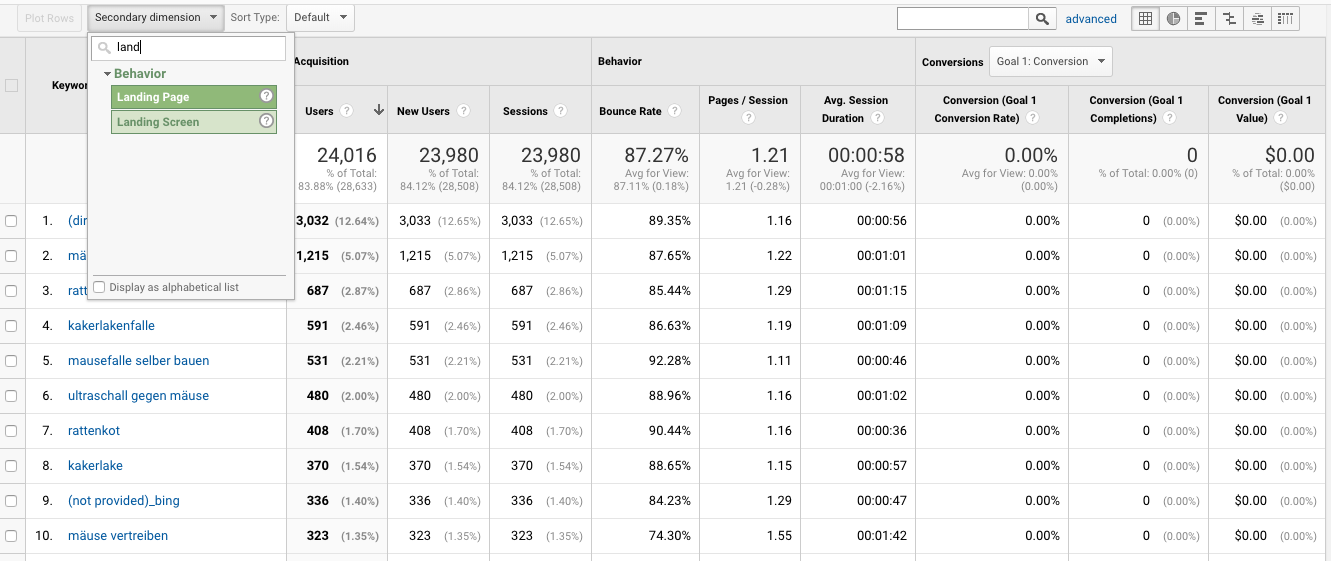Using Secondary Dimension in Google Analytics for Improved Reporting
Using Secondary Dimension in Google Analytics for Improved Reporting
Blog Article
Maximizing Your Digital Strategy With Secondary Dimension Analytics: a Comprehensive Overview
In the world of electronic approach, the application of second measurement analytics can use an extensive understanding of individual habits and site performance. By delving deeper right into the layers of information past the main metrics, services can discover important insights that pave the means for critical decision-making and boosted efficiency. From unwinding the complexities of user communications to make improvements advertising and marketing projects, the potential for leveraging secondary measurements is huge. As we navigate through the intricacies of this thorough overview, we are readied to unravel the methods that can change electronic techniques and push companies towards extraordinary success.
Recognizing Additional Measurement Analytics
Understanding Second Measurement Analytics supplies a vital insight right into the sophisticated analytical devices used in modern information analysis methods. These analytics delve much deeper than primary dimensions, providing an extra comprehensive understanding of information patterns and fads. By incorporating additional dimensions, analysts can section and filter data to reveal hidden insights that may not be obvious with key analysis alone.
Additional Measurement Analytics enables a much more granular assessment of information by introducing additional specifications that can be put on the key dimensions - secondary dimension. This method permits a much more nuanced examination of numerous information points, resulting in a much more thorough analysis of complex datasets
Additionally, Additional Measurement Analytics plays a substantial duty in boosting information visualization strategies. By incorporating secondary dimensions into visual representations, such as graphs or charts, analysts can present information in an extra interesting and thorough fashion, making it less complicated for stakeholders to realize vital understandings and make notified decisions based on the data presented.

Applying Secondary Dimensions Effectively
Making use of second measurements purposefully boosts the deepness and precision of information analysis processes, permitting more precise understandings and educated decision-making. When carrying out additional dimensions efficiently, it is important to very first identify the key metrics that align with your particular goals and objectives. By picking one of the most appropriate secondary dimensions, such as demographics, actions, or modern technology, you can tailor your analysis to extract meaningful understandings.
Moreover, organizing and structuring your secondary measurements in a rational manner within your analytics system can improve the data analysis process. secondary dimension. This entails categorizing dimensions based upon their relationships and value to the main metrics being analyzed. Developing customized records or dashboards that incorporate these additional dimensions can likewise facilitate an extra extensive understanding of customer interactions and actions
Furthermore, routinely assessing and changing your second dimensions based upon the evolving requirements of your electronic technique is crucial for preserving the importance and effectiveness of your data evaluation efforts. By constantly maximizing the use of additional measurements, you can optimize the energy of your analytics tools and drive notified decision-making within your company.
Studying Data for Actionable Insights

To begin the process of examining information for workable understandings, it is important to establish clear goals and crucial efficiency signs (KPIs) that straighten with the company's objectives. By specifying what success resembles for the specific metrics being analyzed, it becomes simpler to determine significant patterns and patterns that can notify decision-making.
Additionally, using tools such as segmentation and comparison analysis can offer extra context to the information, permitting more nuanced insights to be drawn. By breaking down information right into smaller, more manageable subsets, organizations can uncover hidden opportunities and locations for renovation that might not appear when checking out the information all at once.
Optimizing Digital Technique With Findings
Enhancing electronic approaches with actionable insights amassed from information analysis is vital for accomplishing optimal performance in today's affordable landscape. When valuable searchings for have actually been extracted from the information, the following step is to utilize these understandings to optimize electronic methods efficiently. One key facet of this optimization process is the identification click of patterns and patterns that can direct decision-making and source allowance.
By evaluating the information findings, businesses can identify areas of toughness and weakness within their electronic technique. This details can then be made use of to fine-tune marketing projects, enhance individual experience, and drive overall efficiency improvement. If the data discloses a particular market team that is highly involved with particular types of web content, companies can customize their strategies to much better target and provide to this audience section.
Moreover, enhancing digital method with searchings for additionally involves continuous tracking and examination to make certain that the implemented modifications are creating the preferred outcomes. By iteratively improving approaches based upon data-driven understandings, organizations can remain in advance of the competition and adapt to the dynamic digital landscape efficiently.
Determining Success and Iterating
Determining success in digital technique implementation involves analyzing key performance indications to determine the performance of tactics and methods deployed. This evaluation is critical in establishing the effect of the electronic campaigns on the total service goals. By tracking metrics such as site web traffic, conversion prices, click-through rates, and engagement degrees, organizations can examine the performance of their digital projects and make data-driven decisions for improvement.
As soon as the data has actually been collected and examined, it is essential to iterate on the approaches based on the insights got. By recognizing what is working well and what needs renovation, businesses can refine their electronic approach to enhance results.
Final Thought
To conclude, incorporating additional measurement analytics right into your electronic strategy can enhance and supply beneficial insights decision-making. By efficiently carrying out and analyzing data, services can maximize their electronic strategies for success. It is essential to constantly determine success, make needed changes, and repeat on go to my blog the approach to remain affordable in the electronic landscape. Making use of second measurement analytics is a powerful tool for taking full advantage check over here of the effect of your electronic efforts.
Comprehending Additional Measurement Analytics gives a vital understanding right into the advanced analytical tools used in modern data analysis techniques. These analytics dive much deeper than primary measurements, providing a much more thorough understanding of information patterns and fads. By integrating secondary measurements, experts can segment and filter data to discover covert understandings that may not be obvious with main analysis alone.
Using second dimensions strategically enhances the depth and accuracy of data evaluation procedures, enabling for much more precise insights and notified decision-making.Furthermore, organizing and structuring your second measurements in a sensible manner within your analytics system can simplify the information interpretation procedure.
Report this page